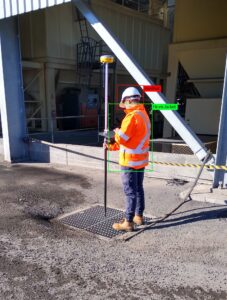The Rise of AI in Construction Industry
In the rapid development of Artificial Intelligence (AI) technology in our live, it is getting normal to have AI-based technology around us. Construction industry is one of the biggest industry with about $10 Trillion dollar spent globally. However, Architecture, Engineering, and Construction (AEC) has been known as not efficient and still utilize manual labor. The lacking of coordination and quality control make there are many change order, wrong specification, and rework happen almost in all construction project. To overcome this problem, how AI can help this industry? What is AI role in construction project? Here are some current and future development of AI that we need to be aware of.
1. Design and Planning:
Predictive analysis: AI algorithms can analyze historical data to predict project costs, delays, and resource needs with great accuracy, paving the way for smarter planning and budgeting.
Generative design: Imagine software that suggests optimal building layouts and structures based on your project parameters. AI-powered generative design tools are making this a reality, leading to more efficient and creative designs.
2. Project Management and Collaboration:
AI-powered scheduling: No more spreadsheet everywhere! AI algorithms can optimize construction schedules, factoring in dependencies, weather, and resource availability, minimizing delays and disruptions based on actual construction project progress. Global Positioning System (GPS) and Radio Frequency Identification (RFID) actively reveal material location across the project. At the same time, LiDAR data paints a dynamic picture of construction progress. By weaving these two data streams together, we can weave a powerful predictive schedule, anticipating needs and optimizing workflows before delays even appear.
Smarter communication: AI-powered platforms can streamline communication between stakeholders, facilitating real-time updates, fostering a more connected and efficient project environment. Sharing of construction project using cloud-based computing make it easier for stakeholder to keep tracking of any changes made.
Digital twins: Virtual replicas of construction projects powered by AI, allowing for real-time monitoring, simulation, and optimization.
Category List
- Artificial Intelligence
- Asset Management
- Digital Twin
- Featured
- Hardware
- Knowledge Graph
- LiDAR
- News
- Site Monitoring
- Vegetation Monitoring
- Virtual Reality
Recent Post
3. Construction and Automation:
Robots on the rise: From bricklaying bots to precision welders, AI-powered robots are automating repetitive tasks, boosting productivity and safety while reducing human error. In the future, automatic 3D robots effortlessly construct buildings, minimizing material waste and human risk with a great precision.
3D Printing: 3D printing technology can build walls layer by layer, and intricate concrete structures sculpted with pinpoint precision. This revolutionary technology is reshaping the industry, offering unparalleled speed, customization, and sustainability. It offers a fast production of customized building and also extremely helpful in disaster areas, offering crucial shelter and hope in the wake of devastation.
Enhance Safety: With cameras equipped with image processing magic and a brain powered by knowledge graphs, instantly detecting missing safety gear like helmets or vests on workers. These virtual watchdogs can instantly trigger alerts, reminding individuals to gear up before danger strikes. But that’s not all. This same AI network can learn the layout of a construction site, identifying and mapping hazardous areas like open pits or unstable structures. With a simple beep or vibration, workers are warned if they stray into harm’s way, creating a safety net woven from data and vigilance.
Real-time monitoring: Imagine drones equipped with AI vision systems seamlessly inspecting structures for cracks or defects, saving time and catching issues before they snowball. Thanks to the development of photogrammetry and object detection techniques that makes the structural defect can be obtained by using image and point cloud data.

4. Operation and Maintenance
Predictive maintenance: AI algorithms analyzing sensor data to predict equipment failures and optimize maintenance schedules, minimizing downtime and costs.
Energy Efficiency: Intelligent systems can learn a building’s energy patterns, optimizing HVAC operation, lighting schedules, and even shading systems to reduce energy usage. Imagine smart windows adjusting to the sun’s movement, or cooling systems adjusting to occupancy rates. This granular control translates to lower energy bills, reduced environmental impact, and a lighter footprint on the planet.
Embrace the Change:
The AI revolution in construction is inevitable. By embracing it now, we can be at the forefront of a sector that is ready for extraordinary growth and efficiency. Whether you’re an architect, contractor, or engineer, upskilling in AI will be your superpower in this transformative era. So, join the journey, and let’s build a smarter, safer, and more efficient future in construction industry.